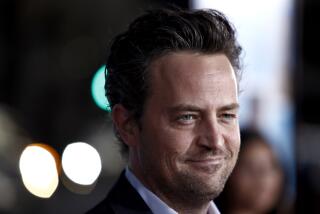A Putrefaction of Celebrities : UNNATURAL CAUSES <i> by Thomas T. Noguchi MD and Arthur Lyons (G. P. Putnam’s Sons: $17.95; 320 pp.) </i>
Dr. Eric Parker has reached the peak of success in his career, leaving thousands of dead bodies in his wake. As chief medical examiner in Los Angeles, it couldn’t have been any other way. He is determined and aggressive, choosing forensic medicine because it is a “field in which a man with ability, with vision, could rise rapidly to the top of his profession.” It also puts him in a field where he doesn’t have to get along with patients. And that’s a good thing. Diplomacy plays no part in Parker’s life.
John Duffy, a TV comedy superstar, drowns during a routine, solitary 6 a.m. swim in front of his Malibu beach house. His ex-wife, ex-girlfriend, series co-star, and psychiatrist attest to drug use and despondency. After initial investigation twists between calling the death accidental, possibly drug related, or suicide, Parker finds his comments distorted by the press. Pressed on one side by an irate supervisor clamoring to have the case quickly dispatched and on the other side by his own conscience that worries about suspicious abrasions on Duffy’s torso, Parker launches his own investigation.
As a star of rising brilliance, Duffy attracted many people, and most were out to gain from his success. In the dirty Los Angeles brew of cocaine, extraordinary wealth, and the intense pressure of celebrity, each member of Duffy’s circle elicits Parker’s suspicion. His perception and persistence draw him through a labyrinth of shady business deals, monumental greed, and disregard for life. Parker becomes a hunter following the trail past fresh kills, always traveling safely behind the action until the moment he identifies and confronts the perpetrator.
Thomas T. Noguchi has lived a life reputed to be suspiciously similar to that of Parker. When Noguchi was chief medical examiner in Los Angeles, he faced controversy while handling cases involving deaths of celebrities including Marilyn Monroe and John Belushi. His experience forms a strong skeleton around which the novel is built and is certainly the basis for some gruesomely descriptive passages. “Unnatural Causes” does not spare the reader in the autopsy room, and the faint of heart should beware. Yet reading these passages illustrates how a decaying corpse can be a repository of fascinating information and clues as to the how, when and where of death. It is in this technical arena that “Unnatural Causes” is at its best.
The story is swarming with characters. Unfortunately, each is dragged forward for a brief interrogation, then allowed to recede into the crowd. No one is strong enough to balance the strength of Parker.
The dialogue is authentic, particularly in the scientific and medical arena. Hollywood locales and show-business gossip make the conversations interesting. There is not a lot of action, so the book is more of a detective/mystery than a thriller. The main reward for reading “Unnatural Causes” is that it serves as a tantalizing way to learn about the compellingly macabre world of forensic medicine.
More to Read
Sign up for our Book Club newsletter
Get the latest news, events and more from the Los Angeles Times Book Club, and help us get L.A. reading and talking.
You may occasionally receive promotional content from the Los Angeles Times.






